By Jessie Walthers, Conservation Program Manager Groundhog Day. Who doesn’t love this most random of…
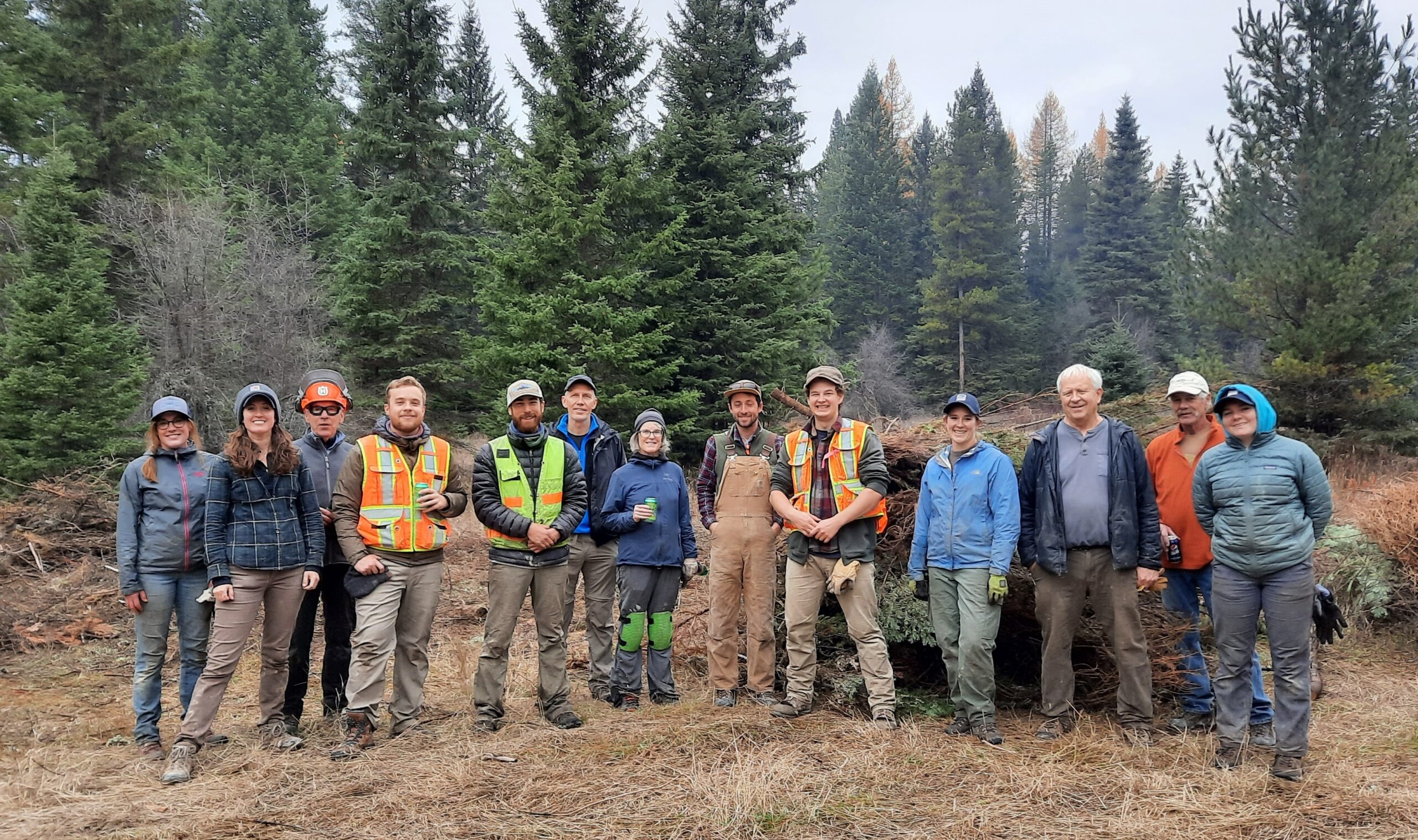
A Community Effort to Restore Krause Creek
Each spring, Krause Creek rages through Don and Mary Garner’s property with an unnatural hydrology that is leading to big problems. In the first two weeks of November, volunteers from all over the state laced up their work boots and fueled up with coffee to get underway on a project to restore this local stream.
Krause Creek is a seasonally flowing stream that originates in the Swan Mountains and terminates in Echo Lake just north of Bigfork, in Flathead County. Don and Mary reached out to the Flathead Conservation District for help with a project focused on a 1,600-foot section that flows through their property. Historically, Krause Creek was shallow and meandering; however, development in the natural floodplain and efforts to channelize flows concentrated powerful flood energy and led to extreme erosion and downcutting. For about three months out of the year a torrent of water flows through this stretch creating significant erosion and incision and transporting large amounts of sediment downstream. This not only creates a barrier to wildlife crossing onsite but threatens water quality and aquatic habitat in Echo Lake.

Participants weave together materials to create a beaver dam analog. 
Staff and volunteers head down the steep banks of Krause Creek to adjust the placement of a log.
The Flathead Conservation District teamed up with Whitefish-based River Design Group and volunteers from the community on a project to restore the creek channel and repair the riparian corridor to a more natural state. To restore the stream, the project utilized a technique called Low-Tech Process-Based Restoration (LTPBR), a methodology which uses the force of the river to do the work. This approach is more cost-effective than employing the use of heavy machinery and costly engineering. Project materials (i.e., branches and logs) were mostly gathered on site, which provided considerable cost savings and the added benefit of thinning the surrounding forest, reducing forest fuel loads, and allowing for enhanced fire resistance.
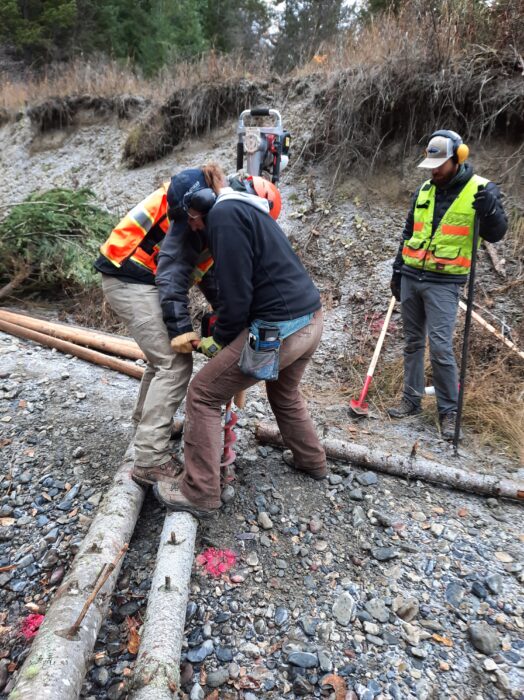
Staff use soil auger to drill pilot holes for posts. 
Volunteer plants willow cuttings along the banks of Krause Creek. 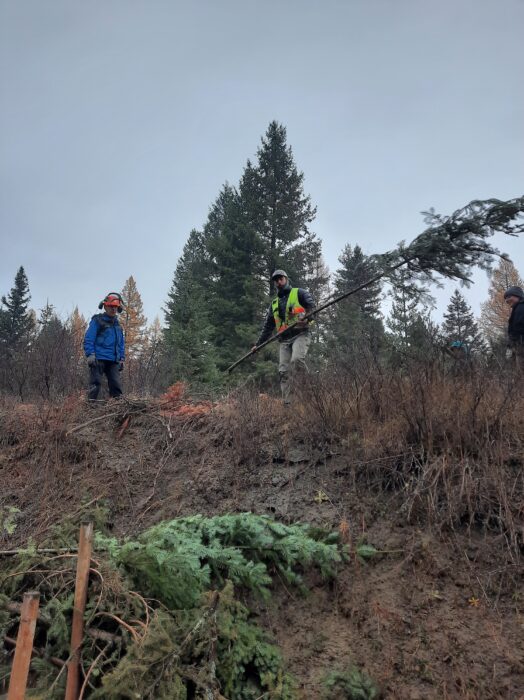
Staff tosses branch into the channel for utilization in a wooden structure.
When arriving at the project site, staff and volunteers were faced with the steep, canyon-like walls of Krause Creek which drop off over 15 feet in some places. Participants got to work in the channel and built 28 beaver dam analogs and post assisted log structures, pounded 222 posts, and collectively contributed 248 hours of volunteer time to the cause. The 28 wooden structures, resembling beaver dams and log jams, will adjust and redirect the flow of the stream to change the shape of the channel and abate further downcutting. The final goal is to create an inset floodplain which will allow native vegetation to establish and stabilize streambanks to prevent future erosion and restore biodiversity and habitat connectivity within the area. Flathead Conservation District and River Design Group will monitor project success over the coming year. If the project performs well in the spring, the Flathead Conservation District plans to install 20 additional structures in the new year.
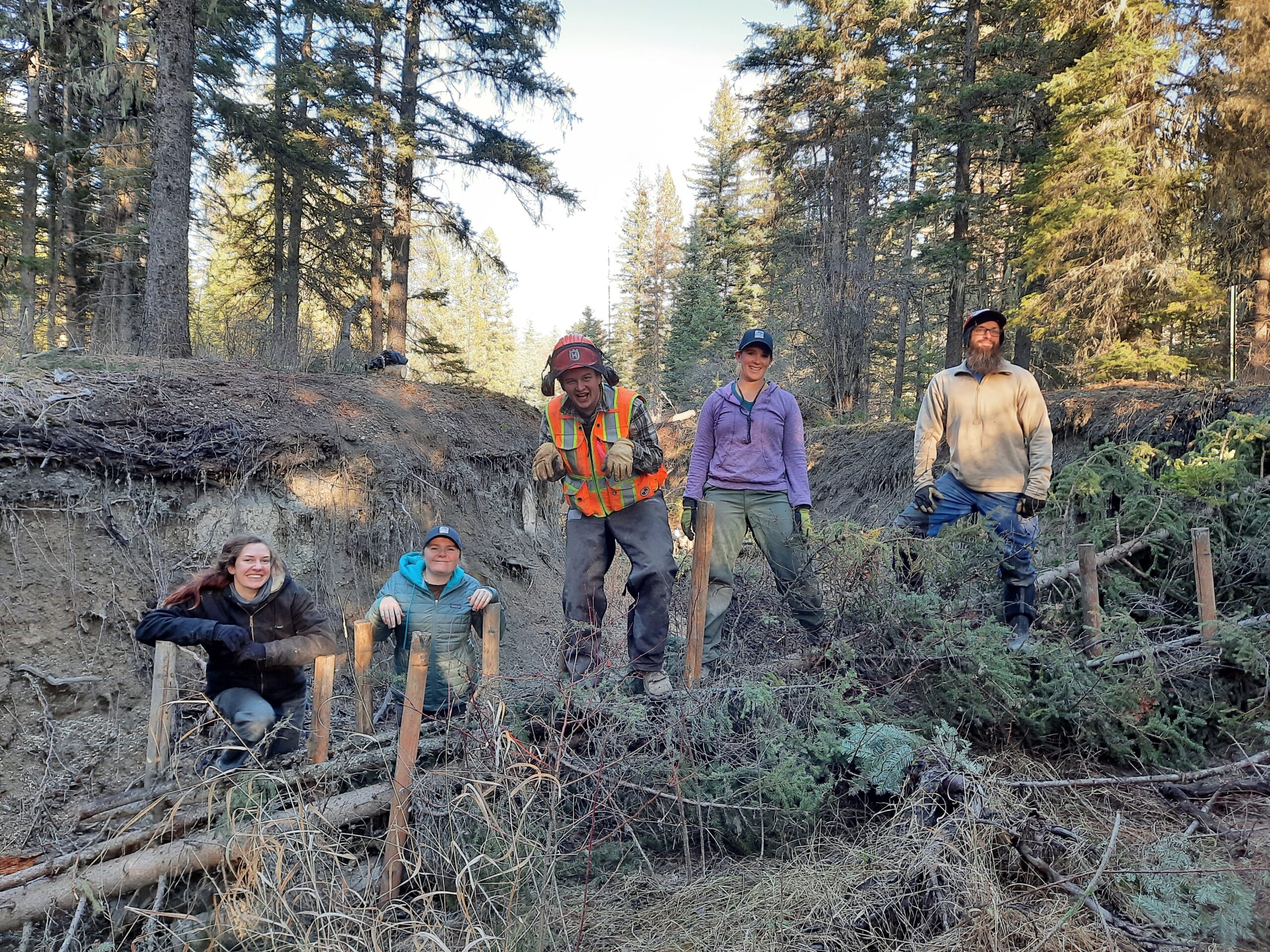
Participants pose as they mimic beavers on a completed post assisted log structure.
Stay tuned for project updates and future opportunities to get involved with this and other projects to restore and protect natural resources in Flathead County. To learn more about LTPBR, please visit: https://lowtechpbr.restoration.usu.edu/
This Post Has One Comment
Comments are closed.

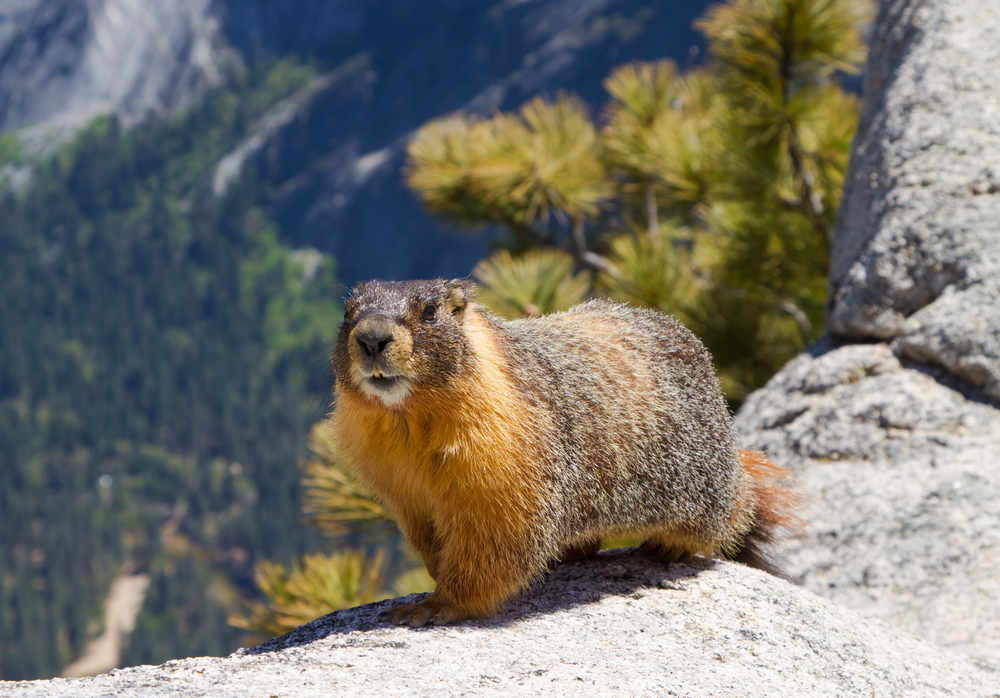
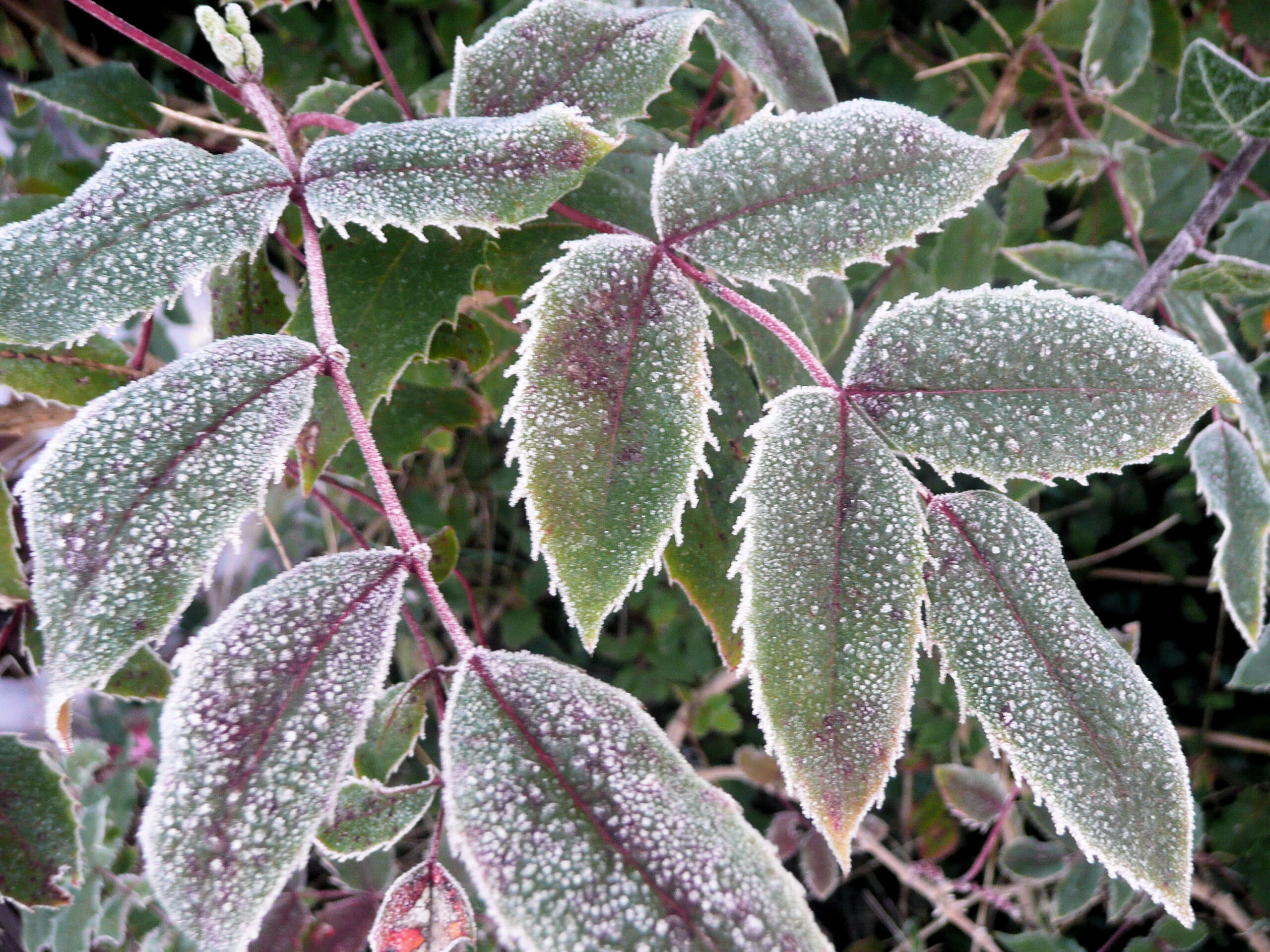
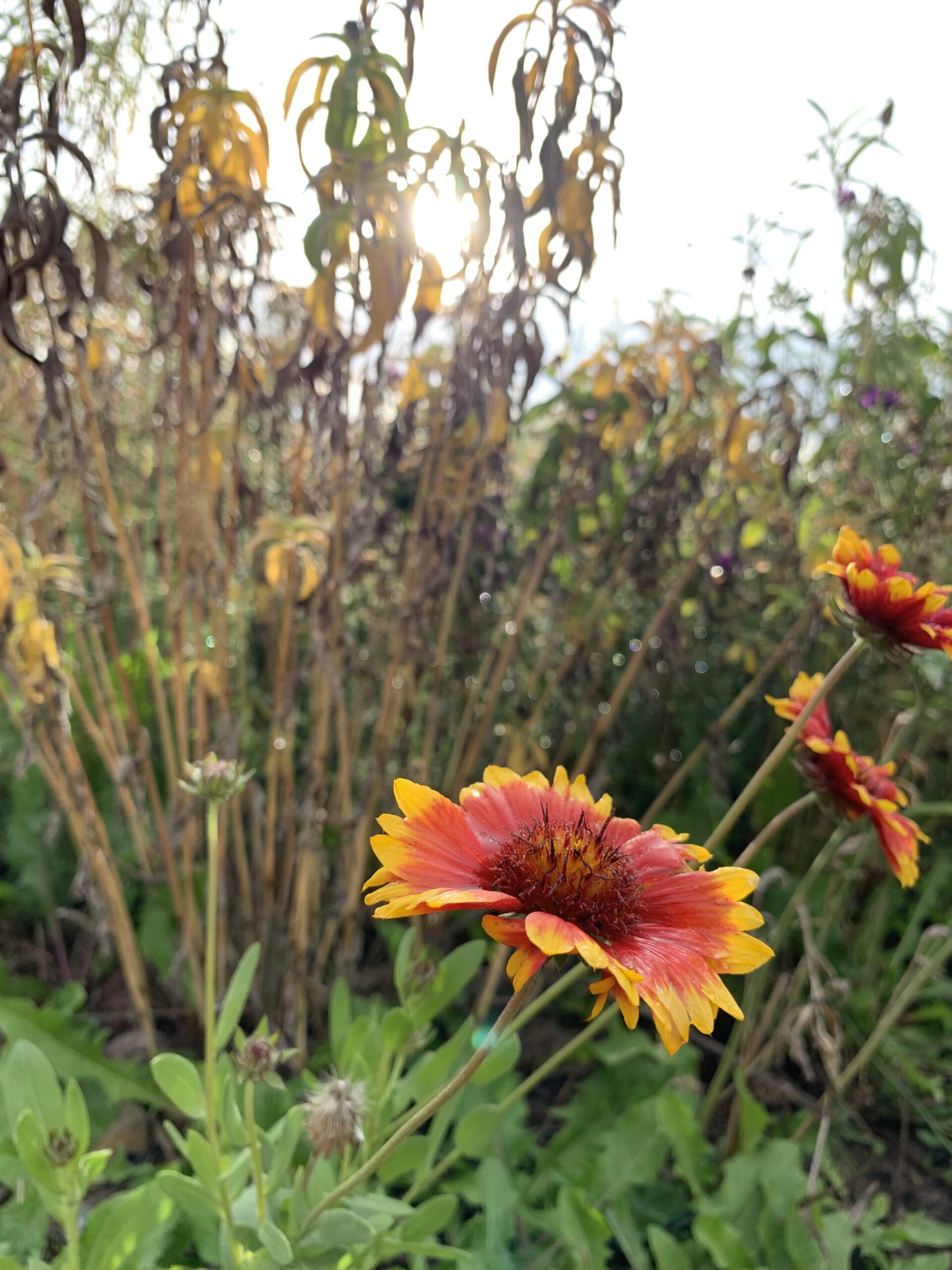
Well done!